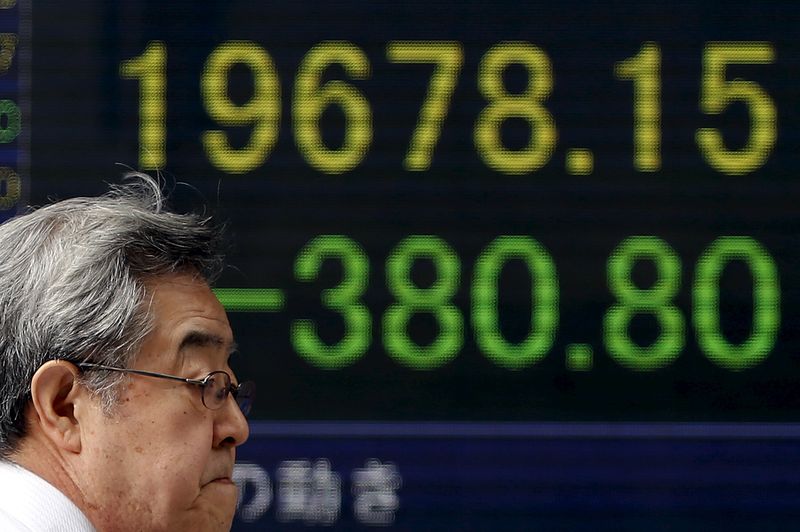By Gina Lee
Investing.com – Asia Pacific stocks were down on Monday morning, alongside U.S. equity futures. The conflict in Ukraine could last longer than expected after Russian President Vladimir Putin warned that the war in Ukraine would continue. Investors are also concerned about an inflation shock in the global economy, with oil soaring over a potential ban on Russian crude supplies.
China’s Shanghai Composite fell 1% by 9:38 PM ET (2:38 AM GMT) and the Shenzhen Component fell 1.92%. February’s trade data, including exports, imports, and the trade balance, is due later in the day. More data, including the consumer and producer price indexes, is due on Wednesday.
China also set its 2022 GDP target at an ambitious “about 5.5%” on Saturday. The country also signaled that more stimulus measures could be on the way, with Premier Li Keqiang vowing at the opening of the National People’s Congress (NPC) to take bold steps to protect the economy as risks mount. Foreign Minister Wang Yi will deliver his briefing to the NPC on Monday.
Hong Kong’s Hang Seng Index slid 3.31%.
Japan’s Nikkei 225 225 fell 3.29% and South Korea’s KOSPI fell 2.35%. In Australia, the ASX 200 fell 1.31%.
The West is exploring a coordinated embargo on Russia after its invasion of Ukraine while ensuring appropriate global supply, according to U.S. Secretary of State Antony Blinken said Sunday.
In response, Putin signed a decree allowing the government and companies to pay foreign creditors in rubles, and the Ministry of Finance warned that sanctions will determine if international investors are able to collect payments. More businesses are also starting to pull out of their operations in Russia, including Netflix Inc (NASDAQ:NFLX). and TikTok.
The invasion has already led to surging prices in grains, metals, and energy, with oil hitting the $139 mark, due to concerns of supply disruptions. This, alongside high inflation, is adding to worries about the global economic recovery from COVID-19.
The U.S. Federal Reserve and other key central banks will now have to juggle tightening monetary policy to curb inflation without impacting economic growth and risky assets.
“For the U.S. economy, we now see stagflation, with persistently higher inflation and less economic growth than expected before the war,” Yardeni Research president Ed Yardeni said in a note.
“For stock investors, we think 2022 will continue to be one of this bull market’s toughest years.”
The Fed should increase interest rates to close to its “neutral” setting this year, implying as many as seven quarter-point hikes, Fed Bank of Chicago President Charles Evans said on Friday. Markets are pricing in around five interest rates of that size in 2022.
“Central banks are facing an exogenous stagflationary shock they cannot do much about,” Federated Hermes (NYSE:FHI) senior economist Silvia Dall’Angelo said in a note.
Reserve Bank of Australia Governor Philip Lowe will speak on Wednesday and Friday, while the European Central Bank hands down its policy decision on Thursday.
On the data front, the U.S. releases its consumer price index on Thursday.
